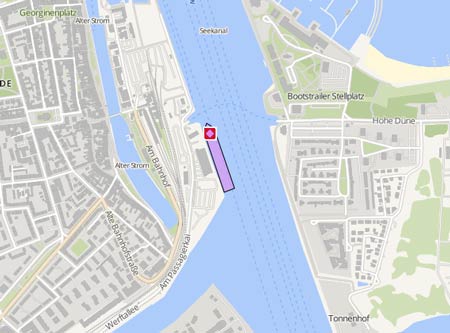SCOTLAND BAY
Course/Position
Latest ports
Latest Waypoints
Latest news
Timeline into close call published
The master of the 'Portland Bay' took almost an hour to notify authorities its engine had failed before the vessel moved dangerously close to hitting the NSW coast after an engine failure on July 4, 2022, at 6 a.m. amid heavy seas. The authorities in Port Kembla were only informed at 6.58 a.m. - hours after smoke was first detected onboard. The Australian Transport Safety Bureau has released a timeline of events ahead of a safety analysis and report into the incident. The ship was instructed by Vessel Traffic Services to leave Port Kembla on July 3 as rough conditions risked damage to the wharf and ship. Early on July 4 the main engine was cut, but was restarted at full speed ahead after the ship surged and rolled heavily in rough seas. At 4.50 a.m. two fire detectors in the engine room went off before smoke was identified and the engine speed was reduced at about 5 a.m. The chief mate began slowing down the main engine and minutes later, the engine setting was reduced further to dead slow ahead. The master notified the ship's managers of the main engine failure and the vessel's situation at about 6 a.m. but did not alert Vessel Traffic Services. At 7 a.m. the master broadcast an urgency message when the carrier was 11 miles south of Botany Bay and 5.8 miles from the nearest coastline. Marine Rescue NSW in Port Kembla acknowledged this urgency message but the Australian Maritime Safety Authority was not notified by traffic services until 7.44 a.m. when the ship was at risk of grounding on the coast in 90 minutes. About 8 a.m., the authority started planning for a possible evacuation of Portland Bay's crew in the event that the ship grounded on the rocky coastline, endangering the crew. 15 minutes later, Portland Bay's master broadcast distress alerts on maritime satellite communication systems and marine radio frequencies. At 8.30 a.m. the master sounded the ship's general emergency alarm and gathered the crew as he contemplated abandoning the ship. Three rescue helicopters arrived at the ship at 9 a.m. but had to abandon a plan to winch the crew to safety due to the ship's instability. When the ship was about one nautical mile from the nearest coastline and in water depths of about 45 meters, the master was able to anchor it. Tug boats punched through dangerous seas to rescue the ship's crew. The bureau's final report will assess several factors which caused the accident including emergency response aboard the ship and the response by state and national authorities. Report with photo: https://www.theadvocate.com.au/story/8139213/stricken-ship-late-to-alert-authorities-in-close-call/?src=rss
Generators run with excessive sulfur
Because the generators of the "Portland Bay" which berthed in the Elbe Port Brunsbüttel on Oct 14, 2012, were run on diesel fuel with excessive sulfur, the Filipino captain had to pay a guarantee deposit of 1780 Euro. The ship had carried copper concentrate from Brazil. During a routine check of the water police Brunsbüttel it was noticed that there was no low-sulfur diesel fuel on board the ship. The fuel on board had a sulfur content from 0.18 to 0.32 percent. The captain now was expecting misdemeanor proceedings.
Upload News

